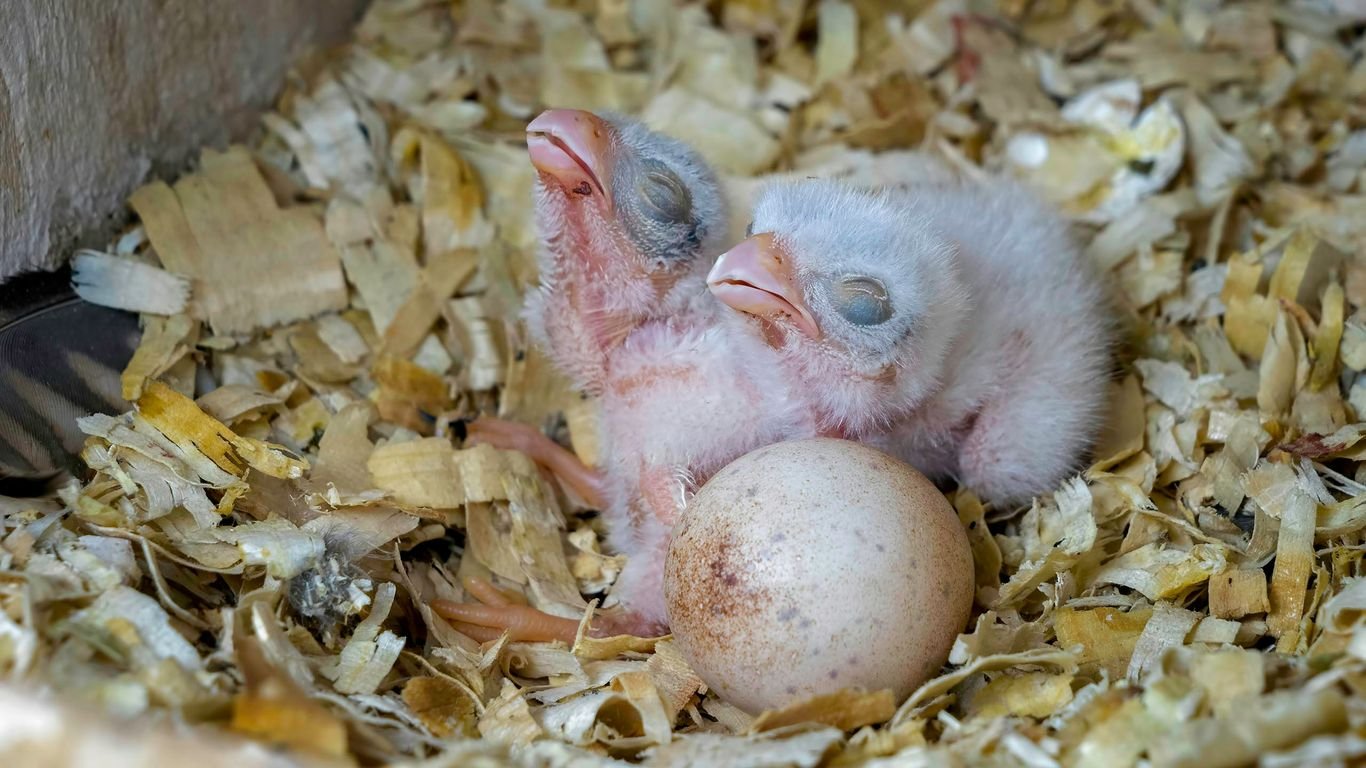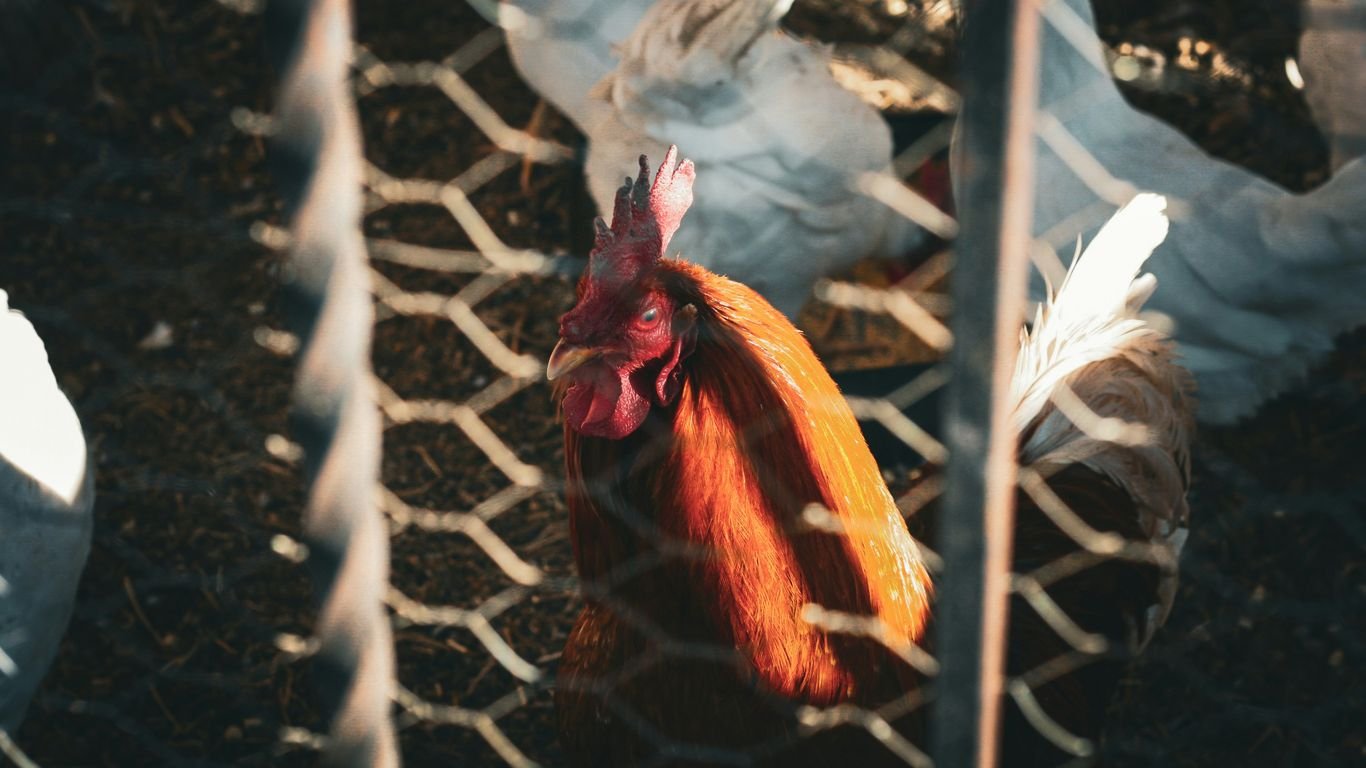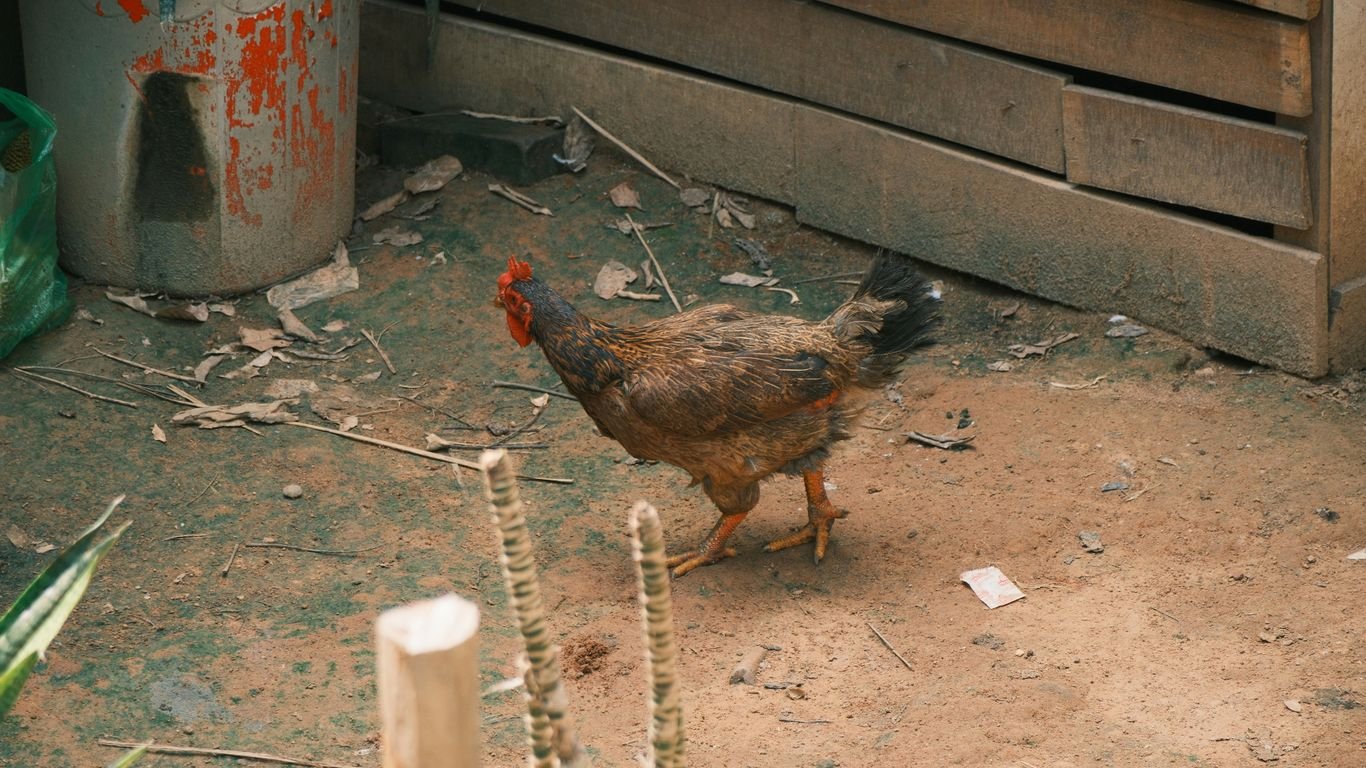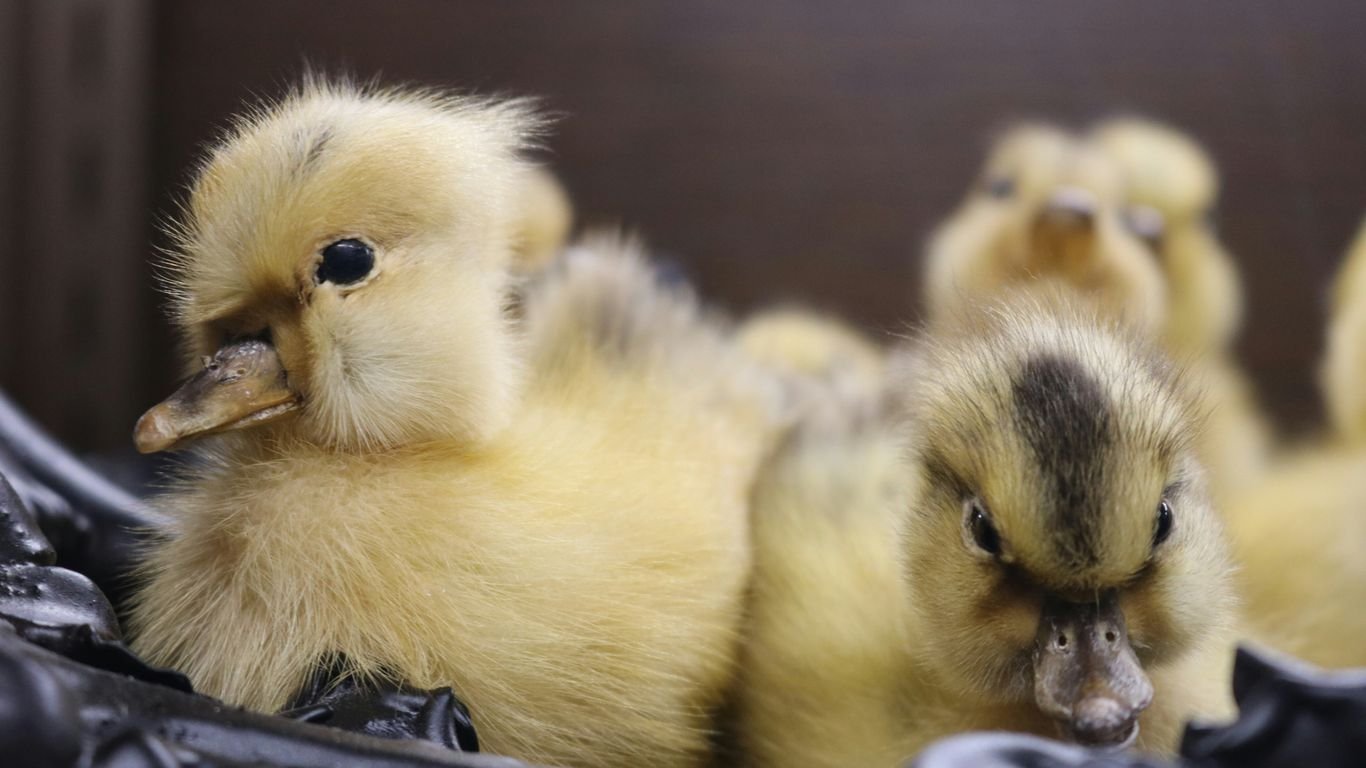Spring Turkey Care: Breeding, Brooding, and Flock Expansion

As the weather warms up, we start thinking about expanding our turkey flock. Spring turkey care is all about getting ready for new life, from choosing the right breeds to setting up cozy brooders. We love this time of year because it means new poults and the promise of a bigger, noisier flock. It’s a lot of work, but watching those little ones grow makes it all worthwhile.
Key Takeaways
- When preparing housing for new turkey arrivals, make sure to clean and disinfect everything thoroughly. Use appropriate bedding like pine shavings and avoid materials that can cause digestive issues.
- For healthy breeding, aim for a flock ratio of at least three hens per tom to prevent over-mating and keep the tom engaged.
- A safe brooder environment is key for poults, with consistent warmth (around 95-98°F initially, decreasing weekly) and a brooder guard to keep them safe and near food and water.
- Turkey poults need higher protein levels than chicks. Start them on a 28-30% protein feed for the first six weeks, then transition to grower and finisher feeds with lower protein percentages.
- Protecting young poults from stress and predators is vital. Minimize handling, avoid chasing them, and consider a temporary fence to separate them from the main flock until they are about four weeks old.
Getting Your Flock Ready For Spring Turkey Care
Spring is the time when we start thinking about expanding our turkey flock. It’s an exciting time, but getting ready for new poults means we need to prepare our existing setup. This involves making sure we have the right breeds for our goals, that our housing is clean and ready, and that we understand how many birds we should have together for healthy breeding.
Choosing The Right Turkey Breed For Your Goals
When we’re looking to add to our flock, the first thing we consider is what we want from our turkeys. Are we aiming for a lot of meat, or are we more interested in eggs and heritage breeds? Different breeds are better suited for different purposes. For meat, breeds like the Broad Breasted White or Bronze are popular because they grow fast and get big. If we’re interested in preserving older, more traditional types of turkeys, we might look at heritage breeds such as the Bourbon Red, Narragansett, or Black Spanish. These often have great personalities and are good foragers, though they might not grow as quickly as the commercial breeds. We also think about how well they do in our climate and if they are good mothers, which is important if we want them to raise their own young.
Preparing Housing For New Arrivals
Before any new poults arrive, we make sure their living space is spotless. This means cleaning out old bedding, scrubbing down walls and floors, and disinfecting feeders and waterers. We want to get rid of any germs or pests that could make our new birds sick. We usually use a bleach solution for disinfecting after everything is clean and dry. For the youngest poults, we set up a brooder with fresh, absorbent bedding like pine shavings – never sawdust or cedar, as those can be harmful. We also make sure the brooder is a good size, giving them enough room to move around and get away from the heat source if they get too warm. A clean, safe brooder is the first step to healthy poults.
Understanding Flock Ratios For Healthy Breeding
Getting the numbers right in our flock is key for successful breeding and a peaceful environment. For a healthy breeding group, we aim for a specific ratio of hens to toms. A good rule of thumb is to have at least three to four hens for every one tom. This helps prevent the tom from overworking any single hen and reduces stress and potential injury to the hens. Too many toms can lead to fights, and too few can mean not enough fertilization. We also keep our young poults separate from older birds and other types of poultry, like chickens, to prevent disease spread and competition for food and space. Different ages have different needs, and mixing them can cause problems.
Here’s a general guide for space as they grow:
| Age (weeks) | Floor Space (sq ft per bird) | Feeder Space (linear inches per bird) | Waterer Space (linear inches per bird) |
|---|---|---|---|
| 0 – 8 | 0.8 – 1.0 | 0.5 – 1.0 | 0.5 – 1.0 |
| 8 – 16 | 1.5 – 2.0 | 1.0 – 2.0 | 1.0 |
| 16 – 20 | 2.0 – 2.5 | 2.0 | 1.0 |
| To Market | 3.0 – 5.0 | 2.5 | 1.0 |
Keeping our flock ratios in check not only supports breeding but also helps manage social dynamics. Turkeys are social creatures, and a balanced flock is a happier, healthier flock. This means fewer squabbles and more time spent doing what turkeys do best: foraging and growing.
Nurturing New Life: Brooding Your Turkey Poults

Bringing new turkey poults into our flock is always an exciting time! But these little guys are delicate and need some special attention right from the start. Proper brooding is key to making sure they get a healthy beginning. We’ve learned a lot over the years, and here’s what works for us.
Creating a Safe and Warm Brooder Environment
First things first, the brooder area needs to be prepped. We make sure it’s super clean and disinfected well before the poults arrive. Any old bedding is removed, and we give everything a good scrub. We also set up the heat lamp and feeders a day in advance to get the temperature just right. Poults can’t regulate their own body heat for the first couple of weeks, so warmth is a big deal. We aim for about 95°F for the first week, then drop it by about 5°F each week. You can tell if the temperature is right by watching the poults. If they’re all huddled right under the heat lamp, it’s too cold. If they’re spread out far away from it, it’s too hot. We want them to be scattered comfortably around the heat source. Drafts are also a big no-no, so we make sure the brooder is sealed up tight against any chilly breezes. We usually use pine shavings for bedding because they’re absorbent and keep things dry, which is really important for keeping the poults healthy. We put down a good few inches of it.
- Prepare the brooder space at least 24 hours before poults arrive.
- Maintain a temperature of 95°F for the first week, reducing by 5°F weekly.
- Observe poult behavior to gauge temperature: huddled means too cold, spread out means too hot.
We also use cardboard or wire to round out the corners of the brooder. This helps prevent the poults from piling up on each other if they get scared, which can be really dangerous for them. Loud noises or sudden movements can spook them easily, so we try to keep the brooder area calm and quiet.
Essential Nutrition for Growing Poults
Getting the right food into those tiny tummies is super important. Poults grow fast, and they need more protein than baby chicks. We start them off with a high-protein game bird starter feed, usually around 30% protein, for the first six weeks. It’s packed with everything they need to get a strong start. We also make sure they always have access to fresh, clean water. Sometimes, especially for the first week, we’ll add some vitamins and electrolytes to their water to give them an extra boost. It’s amazing how much difference that can make in their overall health and how quickly they get going. Making sure they start eating and drinking right away is critical for their development. You can find good starter feeds at most farm supply stores, or check out specialized poultry feed suppliers.
Here’s a quick look at feeding stages:
| Stage | Age | Protein Content | Feed Type |
|---|---|---|---|
| Starter | 0-6 weeks | ~30% | Game Bird Starter |
| Grower | 6-12 weeks | ~20% | Turkey Grower |
| Finisher | 12+ weeks | ~16-18% | Turkey Finisher |
Protecting Young Poults from Stress and Predators
Young poults are pretty vulnerable, not just to the elements but also to other animals. We usually keep the new poults and their mother separate from the main flock for the first few weeks. A temporary fence works great for this. It stops the bigger turkeys or chickens from bothering the momma and her babies, and it prevents any accidental stepping on the little ones. It also helps protect them from potential predators that might be lurking around. We try to avoid chasing or stressing them out when we check on them, too. Too much stress can really set them back. We want their first few weeks to be as peaceful and safe as possible so they can focus on growing big and strong.
Natural Brooding With A Mother Turkey

While we sometimes use incubators, there’s something really special about letting a mother turkey do the work. It cuts down on the mess of a separate brooder setup and watching a hen with her little poults is just heartwarming. If you’ve got a good mama turkey and the conditions are right, you can see a really high hatch rate, sometimes up to 90%!
Providing a Secure Nesting Sanctuary
Sometimes, a hen will pick a spot to go broody that just isn’t safe. Maybe it’s out in the open where predators can easily spot her, or perhaps it’s under the coop where it’s tough to check on her. We’ve found that setting up a dedicated nesting area works best. It doesn’t need to be fancy, but having a door you can close at night is a good idea to keep the mom-to-be and her future little ones safe. Make sure to fill it with soft nesting material, like straw or shavings, to help prevent eggs from breaking. Since some breakage is normal, it’s wise to give your broody hen a few extra eggs than you’re hoping to hatch.
The Importance of One Broody Hen Per Nest
It can be tempting to let multiple broody hens share a nest, especially when they look so cozy together. We’ve been there! But we’ve learned the hard way that it often leads to competition over the eggs and less-than-ideal hatches. Now, we stick to just one broody hen per nest. To keep things calm and prevent other curious birds from disturbing her, we’ll fence off the nesting area. This way, when she takes her quick breaks for food and water, she won’t have a crowd of onlookers. Don’t be surprised if your broody hen seems to stay on the nest for a day or more without moving; turkeys are determined mothers!
Ensuring a Healthy Start for Heritage Poults
When we’re letting a hen hatch her own eggs, we’re really just giving her the space and security she needs. The hen does most of the heavy lifting. We focus on making sure her environment is safe and that she has access to food and water. For heritage breeds, this natural approach is particularly rewarding because they are naturally capable of reproduction. It’s a wonderful way to maintain your flock year after year. We’ve found that by providing a secure nesting spot and limiting disturbances, we give these heritage poults the best possible chance to thrive right from the start.
Expanding Your Flock: Flock Management Tips

So, you’ve got some new turkey poults or maybe you’re looking to grow your existing flock. It’s an exciting time! Expanding your turkey operation means thinking a bit more about space, social order, and making sure everyone stays healthy as they get bigger. We’ve learned a few things along the way that might help you too.
Housing Needs As Poults Grow
Those fluffy little poults don’t stay little for long, do they? As they grow, their space requirements change pretty quickly. What was cozy and safe for a week-old poult can become a cramped, messy situation in just a few weeks. It’s really important to keep an eye on this and adjust their living space accordingly. Overcrowding is a fast track to stress and health problems, and nobody wants that.
Here’s a general idea of how much space they’ll need:
| Age (weeks) | Floor Space (sq ft per bird) | Feeder Space (linear inches per bird) | Waterer Space (linear inches per bird) |
|---|---|---|---|
| 0 – 8 | 0.8 – 1.0 | 0.5 – 1.0 | 0.5 – 1.0 |
| 8 – 16 | 1.5 – 2.0 | 1.0 – 2.0 | 1.0 |
| 16 – 20 | 2.0 – 2.5 | 2.0 | 1.0 |
| To Market | 3.0 – 5.0 | 2.5 | 1.0 |
Remember, these are just guidelines. If your birds look like they’re squabbling over space or food, it’s probably time to give them more room. Also, make sure their feeders and waterers are at the right height. As they grow, you’ll need to adjust them so everyone can reach them comfortably without too much stretching or bending.
Social Dynamics Within The Turkey Flock
Turkeys, like most flock animals, have their own social pecking order. Sometimes, this can get a little intense, especially when you introduce new birds or when young ones are growing up. Pecking is a natural behavior, but it can get out of hand and lead to injuries if not managed. We’ve found that making sure there’s plenty of space, enough food and water for everyone, and avoiding sudden changes can really help keep the peace.
- Provide ample space: Overcrowding is a major trigger for aggression.
- Ensure enough feeders and waterers: Competition for resources fuels conflict.
- Avoid mixing ages too much: Different age groups have different needs and social structures.
- Observe daily: Catching early signs of bullying or injury is key.
If you notice a bird getting picked on, it’s best to separate it until its wounds heal. Sometimes, a little anti-peck paste from the feed store can help deter further pecking on an injured bird. We also found that reducing light intensity can sometimes calm down overly aggressive birds.
Keeping a close eye on your flock’s interactions is more than just a good idea; it’s a necessary part of keeping them safe and healthy. A quick daily check can reveal a lot about how your birds are getting along and if any individuals are struggling.
Year-Round Care For Your Turkeys
Caring for turkeys isn’t just a spring and summer job. They need attention all year long. While the focus might be on breeding and brooding in the spring, your flock management needs to be consistent. This means thinking about their housing through the changing seasons, making sure they have access to appropriate food and water even when it’s cold, and keeping an eye out for any health issues that might pop up.
- Winter housing: Ensure their shelter is draft-free but still has ventilation. They’ll need dry bedding to stay warm and comfortable.
- Summer cooling: While turkeys tolerate heat better than some birds, provide shade and plenty of fresh water. Consider misting systems if you live in a very hot climate.
- Pest control: Keep their living areas clean to deter flies, mites, and other pests that can bother them year-round.
- Health monitoring: Continue daily observations for any signs of illness or injury, regardless of the season.
And don’t forget to check your local rules and regulations about keeping poultry. Sometimes these can change, or you might find new opportunities or restrictions that affect your flock expansion plans. It’s always good to be informed!
Feeding Your Growing Turkeys

When it comes to feeding our turkeys, we’ve learned that it’s not a one-size-fits-all deal. What they need changes a lot as they get bigger, and getting it right makes a huge difference in how healthy and happy they are. Paying attention to their diet at each stage is key to a thriving flock.
Starter Feed For Young Poults
Right from the start, those little poults are growing like weeds, and they need a serious protein boost to keep up. We usually go for a turkey starter feed that has about 28% to 30% protein. This high-protein mix is what helps them build strong muscles and a good immune system. We make sure they have access to this feed constantly for the first 6 to 8 weeks. It’s also super important that this feed is fresh. We try not to keep feed around for more than a month because older feed can sometimes get moldy, which is bad news for our little ones.
Transitioning To Grower And Finisher Feeds
Once our poults hit about 8 weeks old, we start to switch their food. They don’t need quite as much protein as they did when they were tiny. We move them onto a ‘grower’ feed, which typically has around 20% to 24% protein. This helps them continue to grow steadily without getting too much of a good thing. Then, if we’re raising turkeys for meat, we’ll switch again around 16 to 20 weeks to a ‘finisher’ feed. This usually has about 18% to 20% protein. It’s designed to help them put on that final bit of weight and condition before they’re ready.
Ensuring Proper Protein Levels At Each Stage
Getting the protein levels right is probably the most important part of feeding our turkeys. It’s not just about filling their bellies; it’s about giving their bodies exactly what they need to develop properly at every single stage of life. Too little protein, and they won’t grow as well or be as healthy. Too much, especially later on, can also cause problems. We always check the feed bag to see the protein percentage and make sure it matches what our birds need based on their age.
Here’s a general guideline we follow:
- Poults (0-8 weeks): 28-30% protein (Starter Feed)
- Growing Turkeys (8-20 weeks): 20-24% protein (Grower Feed)
- Finishing Turkeys (20+ weeks, for meat): 18-20% protein (Finisher Feed)
- Adult Maintenance (non-breeding): 15-20% protein (Maintenance or All-Flock Feed)
We also learned that fresh, clean water is just as vital as the feed. Turkeys, especially young ones, can get into trouble if they drink too much too fast after being without water. So, if they ever run out, we reintroduce it slowly to avoid upsetting their digestion. It sounds simple, but it’s something we always keep an eye on.
We also make sure to have grit available, especially once they start eating grains or foraging. It helps them digest their food properly. For our laying hens, we always provide crushed oyster shells so they have the calcium they need to make strong eggshells. It’s all about giving them what they need, when they need it.
Wrapping Up Your Turkey Raising Journey
So, there you have it! Raising turkeys from breeding to brooding and expanding your flock can feel like a lot at first, but we’ve found it’s totally doable. We learned that giving those mama turkeys a safe, quiet spot to do their thing is key, and keeping them separate from the rest of the crew, at least for a while, really helps the little ones get a good start. Don’t forget about their food – they need a bit more protein than chickens, especially when they’re young. It’s a bit of work, sure, but watching those fluffy poults grow into majestic birds is pretty awesome. We hope this guide helps you feel more confident as you bring more turkeys onto your homestead. Happy turkey raising!
Frequently Asked Questions
What’s the best way to keep our new turkey babies warm?
When our little turkey poults first arrive, they need to be kept really warm, around 95 to 98 degrees Fahrenheit. We use a heat lamp, making sure it’s safely secured, and lower the temperature by about 5 degrees each week until they’re around six weeks old and can handle cooler temps. It’s also super important to have a ‘brooder guard,’ which is like a circle made of cardboard that keeps them close to the heat but also lets them move away if they get too hot. We always keep a thermometer handy to check the temperature.
How much space do our turkeys need as they grow?
Turkeys need more room than you might think! For the first few weeks, about 1.5 square feet per poult is good. As they get bigger, we give them more space, moving up to 3-4 square feet per bird by the time they’re 8 weeks old. By the time they’re adults, we aim for at least 10 square feet per bird, especially for the big, fast-growing kinds. They also need plenty of room to roam outside, and sometimes we even put up netting overhead to stop them from flying too high and escaping.
What should we feed our growing turkeys?
Young poults need a special starter feed that has a higher protein content, usually around 28% to 30%, because they grow so fast. After about six weeks, we switch them to a grower feed with a bit less protein. It’s important to always use fresh feed and store it somewhere dry. We also sometimes add vitamins and electrolytes to their water for the first week to give them a good start.
How do we make sure our mother turkey and her eggs are safe?
When a hen decides to sit on her eggs, we make sure she has a safe, quiet spot. We give her a nesting box with soft bedding, like pine shavings, to keep the eggs from breaking. Sometimes, hens choose tricky spots, so we’ll put up a little fence around her nesting area to keep other curious birds away. We also make sure the nesting area can be closed up at night to protect her and her future babies from predators.
Can we have more than one mother turkey share a nest?
Even though it looks cute, we learned it’s best to only have one broody hen per nest. We’ve seen them get competitive over eggs before, which didn’t lead to the best hatching results. So, we give each mother her own space to focus on her eggs without any distractions or arguments.
Why shouldn’t we mix our turkeys with chickens or turkeys of different ages?
We keep our turkeys separate from chickens because they can sometimes pass diseases to each other, and turkeys can get really sick even if the chickens seem fine. Also, mixing turkeys of different ages isn’t a good idea. Younger ones need different food and are more likely to get sick, and everyone ends up competing for food and space. It’s just healthier and less stressful for all the birds to keep them in their own age groups and away from other poultry.






